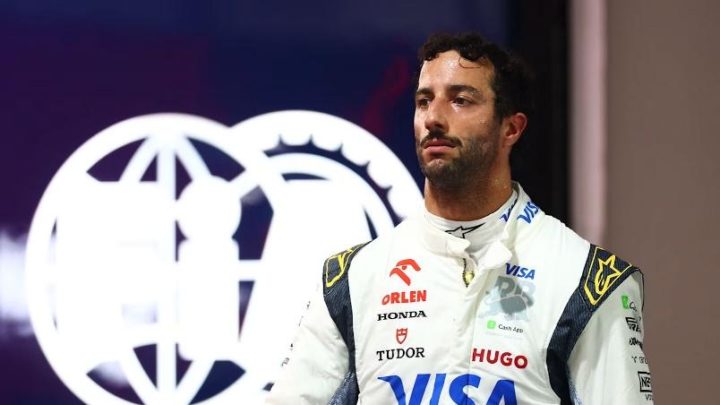
When Daniel Ricciardo crossed the finish line at the 2024 Singapore Grand Prix, something felt off.
Maybe it was because Ricciardo’s team, Visa CashApp RB (VCARB), decided to run a denim-inspired livery on their car at a venue with a sauna-like humidity—where jeans would not be the norm. Maybe it was VCARB’s controversial choice to pit Ricciardo with three laps to go in an attempt to steal the fastest-lap point away from Lando Norris, a thinly veiled effort to aid Red Bull’s Max Verstappen in his championship defence (for VCARB, Red Bull’s junior team). Or maybe it was that Ricciardo, despite starting sixteenth and finishing two places lower, somehow won the fan-voted “Driver of the Day” award.
The answer came a few days later: Singapore was the final race of Daniel Ricciardo’s fourteen-year career.
To a certain extent, it was no surprise. The cars had not even hit the track in Singapore before rumours began circulating that Ricciardo could be dropped in favour of Red Bull/VCARB reserve driver Liam Lawson before the next race in Austin, Texas. It turned out that those wheels had already been put into motion. Ricardo was informed he would lose his seat just hours before the race, though Lawson had known about the swap for weeks.
So why did Red Bull deny the media, the fans, and the F1 community a proper sendoff for one of Formula One’s most beloved characters?
Red Bull isn’t new to brutal driver swaps. Daniil Kvyat, Pierre Gasly, Alex Albon, and Nyck de Vries are just some of the names in the past decade to have suffered the wrath of Red Bull’s sink-or-swim environment. While there is no defence for Ricciardo’s 2024 season, as he was consistently beaten by teammate Yuki Tsunoda, his racing pedigree should have warranted more respect.
With eight Grand Prix wins in cars that were by no means race winners, thirty-two podiums, three pole positions (two around the streets of Monaco) and 1,329 world championship points, it is not the resume of just an average driver. He outperformed his four-time world champion teammate, Sebastian Vettel, in his first season at Red Bull and was regarded as Max Verstappen’s most competitive teammate. He returned the Renault F1 team back to the podium after a nine-year drought and brought McLaren back to the top of the podium at the 2021 Italian Grand Prix, a shining light in a shaky two-year stint with the Woking-based outfit. Even with his downturn in form over the past two seasons, Ricciardo has always been a purebred racer.
However, it was not just his racing success that drew fans in but his “Honey Badger” personality. Whether it be his infectious smile, charisma, or the iconic “showy” celebration of drinking the podium champagne from one of his racing boots, he brought a refreshing breath of authenticity in a sport often purported as a commercialized “rich-boys” club.
When Netflix’s Drive to Survive docuseries brought in a surge of new fans to Formula 1, Ricciardo’s personality made him the unofficial face of the show. His popularity in the U.S. led to interviews by Jimmy Kimmel, Ellen DeGeneres, and Stephen Colbert—the only driver aside from Lewis Hamilton to shine outside the Formula 1 sphere.
So why did Red Bull, a team that was so instrumental to Ricciardo’s career, treat him so poorly?
There is no dispute that Ricciardo did not deserve to return to the Red Bull team. But he deserved the opportunity to re-ignite his career after a particularly awful year at McLaren in 2022. After his Red Bull departure, team principal Christian Horner advocated for Ricciardo’s talent, even when people doubted his abilities. Yet, in Singapore, Horner and his team fuelled speculation, leaving fans not knowing by the checkered flag whether to say ‘good-bye’ or ‘see you soon’.
Red Bull itself seems just as confused as its fans. The ongoing speculation surrounding Sergio Pérez’s Red Bull seat—amidst his comprehensive obliteration by Max Verstappen—opens the door for drivers like Lawson to prove themselves. Yet, Horner’s claims that if Lawson does not live up to expectations, “[we] know what Daniel’s capability is”, hints at yet another return for Riccardo. Paired with Horner’s wish to keep Riccardo in an ambassadorial role, it feels like an ex-lover trying to rekindle the past, despite a brutal breakup just days earlier. This approach not only adds pressure to Lawson but also is insulting to Ricciardo. Elevating him to a seat he has not yet earned cheapens both the potential promotion and the controversy surrounding his second exit from the sport.
It is a shame that Ricciardo’s career should end with the hollow achievement of a meaningless fastest lap. But on that final lap, as Ricciardo wrestled his denimed VCARB 01 around the streets of Marina Bay, there was a flash of the racer who many thought had been lost. Although his exit was unceremonious, his last act, however insignificant it may have seemed, was the mark of a true racer, living up to his mantra of “licking the stamp and sending it.”
